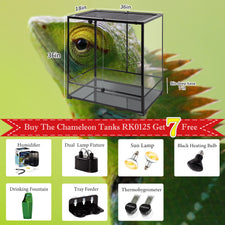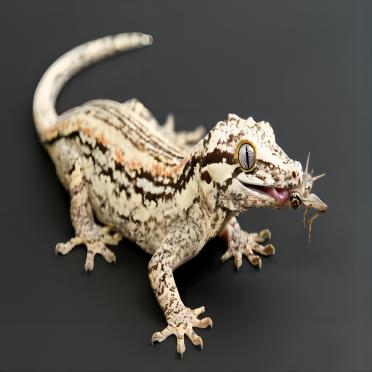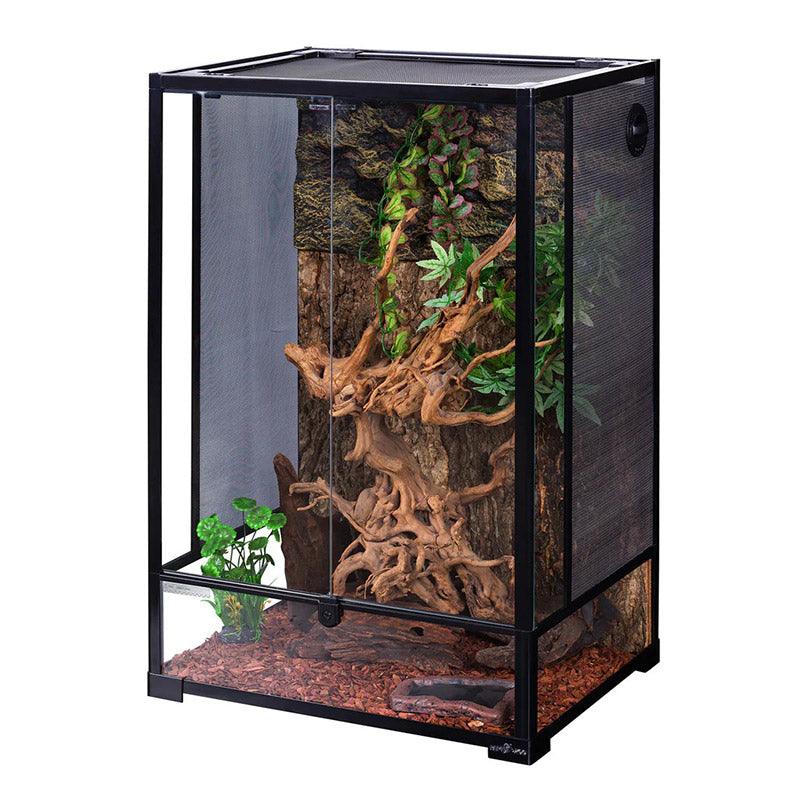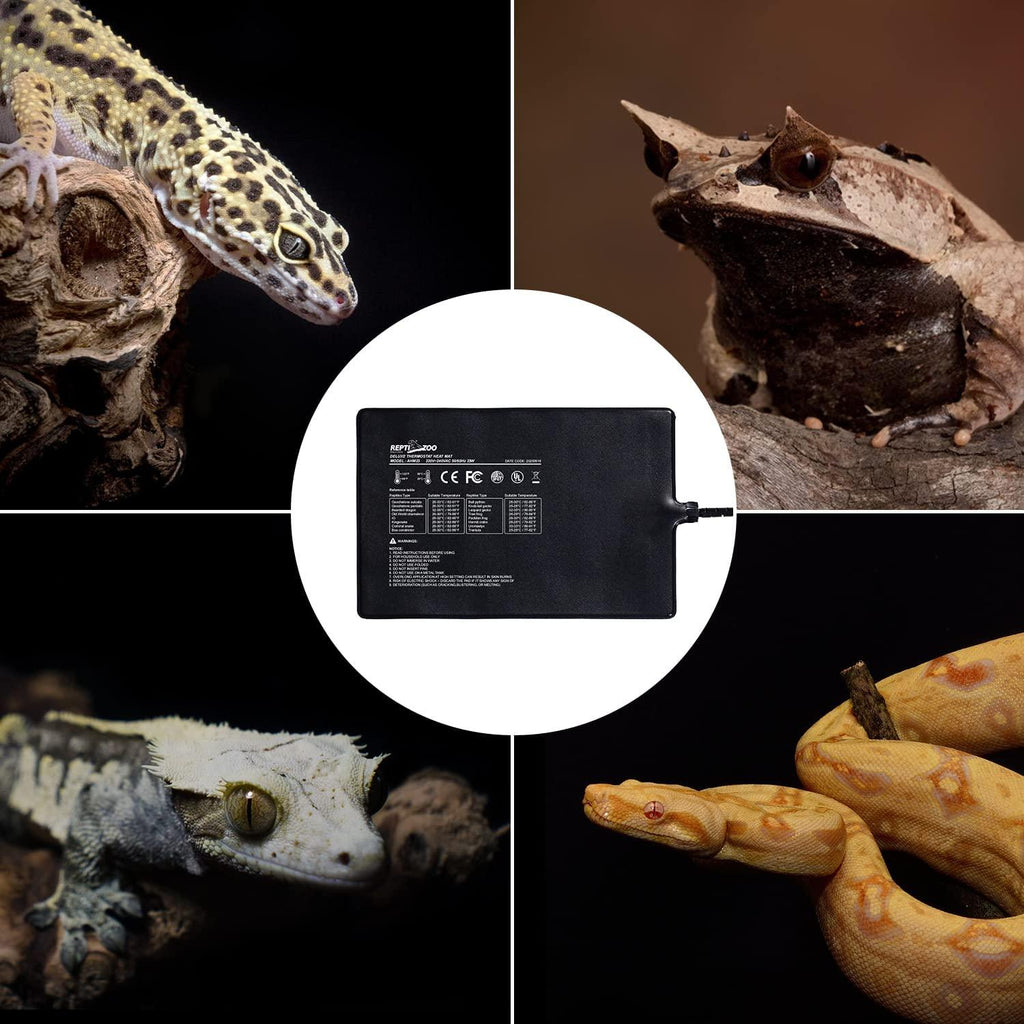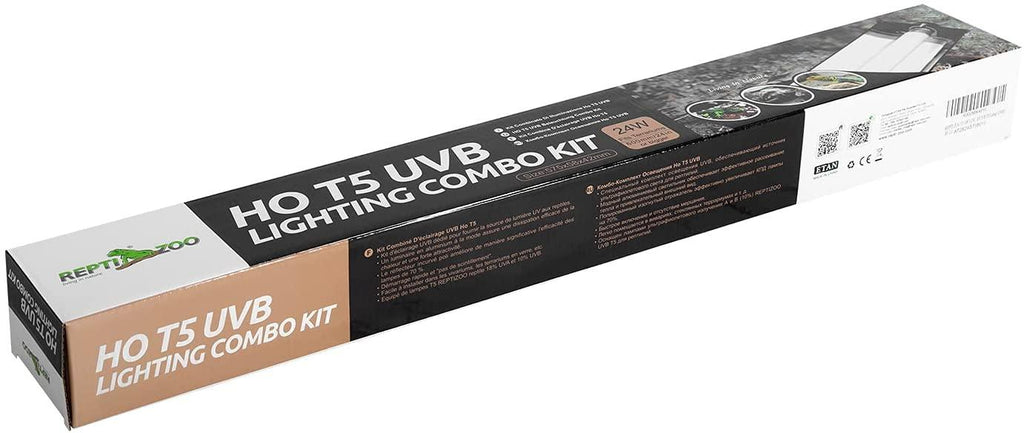In our dull lives filled with stress and monotony, pets add a special touch. While most of us immediately assume pets to necessarily be dogs and cats, other wonderful pets exist. And an example of a friendly and adorable pet is - the Gargoyle gecko.
In this article, we offer you complete information on their behaviors, attributes, and guidelines on their housing needs, lighting and heating needs, habitat cleaning, diet and feeding, breeding, and more.
Let's get started.
Gargoyle Gecko - Care Sheet for Starters
Pets are adorable. As a responsible and caring parent, you will be very prudent in attending to all their needs and desires. That said, to nurture your gargoyle gecko properly, you must first understand its nature, characteristics, and behaviors. This is vital to ensure you meet your pet’s requirements in the best manner and at the right time.
Characteristics of Gargoyle Gecko
They are of a typical shape and color.
Some juvenile geckos have red and orange blotches on a high-contrast striped black and white body surface. Adolescent males exhibit a hemipenal bulge near their tail, while adolescent females show a relatively slight bulge near the tail.
They are rare species.
Natives of New Caledonia, a group of islands between Fiji and Australia, Gargoyle Gecko are the rarest lizards and are bred in large numbers.
They come in quite a large size.
Gargoyle geckos are usually 4-4.5 inches in snout-to-vent length and have a total length of nearly 8 inches. They take 15-18 months of age to develop sexually and weigh around 35 grams.
They have a long lifespan.
Assuming you take good care of your gecko, they can live up to 15 to 20 years.
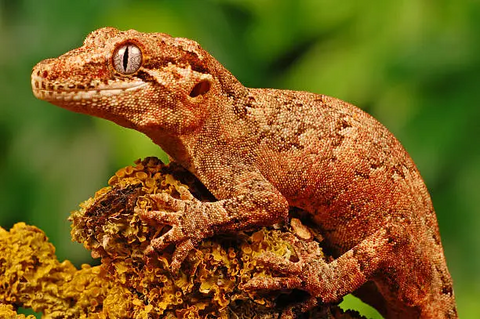
Guidelines and Pointers for proper growth and development of Your Lovely Pet - Gargoyle Gecko
Housing Needs Of Gargoyle Gecko
Similar to most reptiles, Gargoyle Geckos prefer mildly warm yet somewhat humid environments to thrive well. They usually need a temperature of 24 degrees Celsius and feel agitated if it goes higher. You must ensure that the environment doesn’t get overheated and that there’s adequate ventilation.
A good idea is to offer a tall glass reptile enclosure with proper ventilation at the top and front. Place the enclosure in a cool room so that it maintains the required temperature gradient.
Besides, Gargoyle Gecko loves climbing and moving up and down the branches. You can amuse your pet by creating multiple routes of hardwood decorations that will keep it engaged. Additionally, offer them a partial covering over the lizard enclosure, though they are pretty human-friendly.
Most importantly, cover their habitat with green leaves and plants as they prefer to remain hydrated, and these will absorb water when the enclosure is sprayed.
Gargoyle Gecko Tank's Decoration
As mentioned, Gargoyle geckos are thrilled to play around with numerous twigs and branches. You can decorate your dear gecko’s habitat with artificial or live plants. Let’s understand both of these. If you wish to use artificial ones, place soil or moss bedding and cover it with artificial leaves and plants.
Alternatively, for live plants, you must use a soil layer rich in nutrients plus a mesh that serves as a drainage layer between the soil and the plants. Additionally, adding different insects, especially the springtails, is good to clean the soil.
Once the substrate is ready, you can focus on providing multiple routes passing from the top to the bottom of the enclosure and again from one side to the other. To maintain the ideal humidity conditions, ensure the branches are at least one-third in an absorbent material.
Next, as Gargoyle geckos like decorated environments and usually drink droplets of water on the leaves, you can use artificial decorations like resin ornaments. If you wish to use wild live plants to beautify, the Delvis Ivy and Ficus benjamina are the ideal options.
Gargoyle Gecko Tank's Cleaning
Remember, Gargoyle geckos must be brought up in a neat and clean environment, maintaining all hygiene.
Some of the pointers to keep in mind are:
- Always use a spot clean every day and a complete cleaning every four weeks.
- Remove your pet, its bedding, and all decorations before cleaning.
- Spray a reptile-friendly disinfectant in the enclosure and allow for 30 seconds.
- Next, clean the enclosure with a dry paper towel.
- Repeat the process twice to ensure the enclosure is thoroughly cleaned.
- Spray the same substance and wipe with a dry paper towel in the same manner to clean all the decorations.
- Finally, put them back in the enclosure.
Heating Needs
Gargoyle geckos need a temperature of 75 degrees Fahrenheit to stay comfortable. If you feel your pet’s enclosure is getting warmer, a suggestion is to use a heat mat along one of the side panels of the glass container. The heat mats operate using a simple thermostat and don’t emit any light, so they can also be there during the day and night.
You can also provide a low-wattage basking bulb on the warm end during the daytime. This will ensure the required temperature gradient is maintained and your lovely gecko remains comfortable. Further, you can use terrariums for better ventilation or ensure the enclosure is at least 45cm wide to keep the perfect temperature gradient between the warm and cool ends.
Though a simple thermostat suffices in most cases, it’s best practice to use a thermometer - a dial one or digital probes - to ensure the temperatures stay within limits.
UVB Lighting Needs
While your Gargoyle gecko stays partially in the shade, it is exposed to some UVB lighting throughout the day. Some people consider UVB lighting as an optional aspect. However, it is equally essential for the best growth of your pet.
If you use terrariums provided with a fleece or mesh, it will reduce the amount of UVB lighting your gecko receives. Providing a wider mesh lid that brings in 5%UVB or a smaller one offering 6-7% UVB lighting is recommended.
You can use compact lamps 9-12 inches wide in canopies, ensuring you replace them every six months. Alternatively, opt for T5 UVB tubes in these terrarium canopies that are nearly 24 inches wide and need replacement only once a year.
Diet and Feeding guidelines
Some points regarding the diet for Gargoyle Gecko are:
- Give them a pureed version of baby foods like bananas, peaches, and apricots.
- Provide them with a lot of insects, which they relish, in addition to fruits.
- Crickets are the perfect choice of insect feed, but ensure the length of cricket is equal to its head’s width.
- Feed them reptile-powdered supplements regularly as a part of their diet.
- Ensure the insects you feed your pet are also coated with nutrient-rich supplements.
- Always place water in their habitat in a shallow dish.
Breeding of Gargoyle Gecko
Usually, males who grow up well within one year are ready to mate, and this is longer than their female counterparts. The size of the female also plays a role in determining if they would breed well. It’s better not to place young males with a larger female as male geckos tend to harass the females.
Once they are grown up and sufficiently healthy, a male can be placed among the females. Remember, it’s advisable to leave them alone and not stand to watch them mate. They are best bred when left to themselves.
Depending on the female's health condition and reproductive stage, you may see eggs in 30-60 days or even several months. You may hear chirps, squeals, and other sounds from the enclosure; this indicates the breeding behavior. Make sure that if one Gargoyle gecko is much larger than the other, it’s better to watch them occasionally. Otherwise, it’s best to leave them on their own.
Common health issues, diseases, and treatment
Metabolic Bone Disease
Symptoms:
Wavy tail, soft jaw, curved limbs, loss of appetite and lethargy
Cause:
Calcium or Vitamin D3 deficiency, Not sufficient exposure to UVB light
Treatment:
- Check for their bone density from a vet and offer necessary Calcium/Vitamin D3 supplements
- Ensure there’s a small bulb in the enclosure and they receive enough UVB light.
Flopping Tail Syndrome (FTS)
Symptoms:
The tail hangs on its back or side when upside down, and problems in defecating or egg-laying
Cause:
Lack of strength or deformity in tailbone and hips
Sleeping irregularly constantly.
Treatment:
- Consult a vet. Tail amputation may be needed to eliminate the bone deformities.
- Cover the habitat with many plants and decor to provide hideouts and prevent it from sleeping upside down.
Shedding
Symptoms:
Reduced activity, loss of appetite, faded color
Causes:
The Gargoyle gecko sheds its skin to manage the changes as they gain or lose weight. This is a normal process and nothing to worry about.
Treatment:
Increase the humidity in the enclosure up to 80%-100%. Keep the surroundings cool.
Wrapping Up
The gargoyle gecko is an amazing and friendly pet that can fill your stressful life with joy. Follow the information and the guidelines outlined in the article to ensure you contribute effectively and in the right manner to meet all your lovely pet’s requirements.
Give some time for your reptile pal to get accustomed, and then it’s all fun!








